Is Expensive Cheddar Cheese Worth the Price Tag?
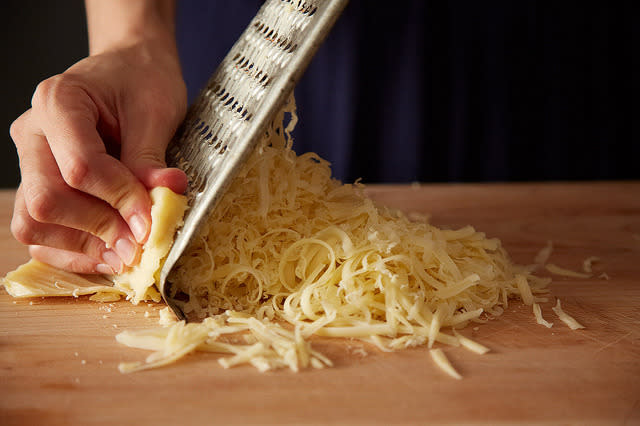
Grating cheddar cheese. (Photo: James Ransom)
If you keep one block of cheese in your fridge at all times, odds are it’s either Parmesan or cheddar. Parmesan may be a real heartbreaker in the grocery store, and unfortunately there really aren’t substitutes that are fit to shine its shoes. (Please, never buy powdered Parmesan. That stuff has no place outside of your elementary school cafeteria.)
Related: The Poor Man’s Parmesan
Unlike Parmesan, cheddar comes in many colors, flavors, and price ranges. It comes in flavors you are not sure should be paired with cheddar, like wasabi and cranberry. It comes pre-shredded. It comes “Low Fat.” It comes in generic brands, and it also comes in brands that are cloth-bound, aged for ten years, and pricier than their weight in gold. Hey, there’s a reason “cheddar” is slang for money.
Related: How to Talk About Cheese
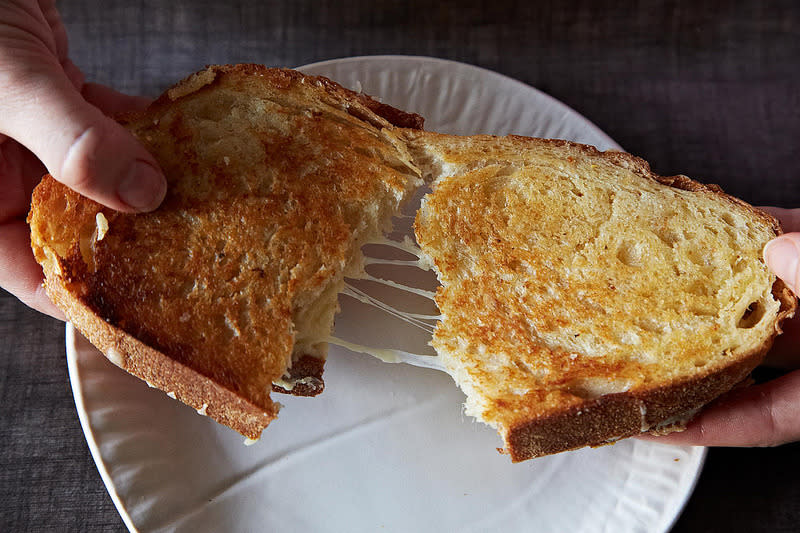
Grilled cheese sandwich. (Photo: James Ransom)
Needless to say, all of these options can get very overwhelming, especially if you, like me, have crippling grocery store indecision syndrome. So today, we’re putting cheddar cheese to the test, and asking: Is it worth it to splurge on a fancy brand, or will the budget brand do the trick? The answer isn’t as clear-cut as you might think.
Related: Why You Shouldn’t Pair Cheese with Wine (Plus 10 Tips for Building a Better Cheese Plate)
For the sake of simplicity, I only tested two brands of cheddar cheese, both marketed as “sharp”: a budget store brand (priced $2.50 for 8 ounces), and a fancy “artisanal” brand that the sales associate assured me was one of the most popular (priced $5.55 for 6 ounces). I asked testers to select which cheese they preferred as-is and which they preferred when mixed into macaroni and cheese (per usual, I went the Not Recipes route).
Related: Why Your Cheese Stinks and When It’s a Good (and Bad) Thing
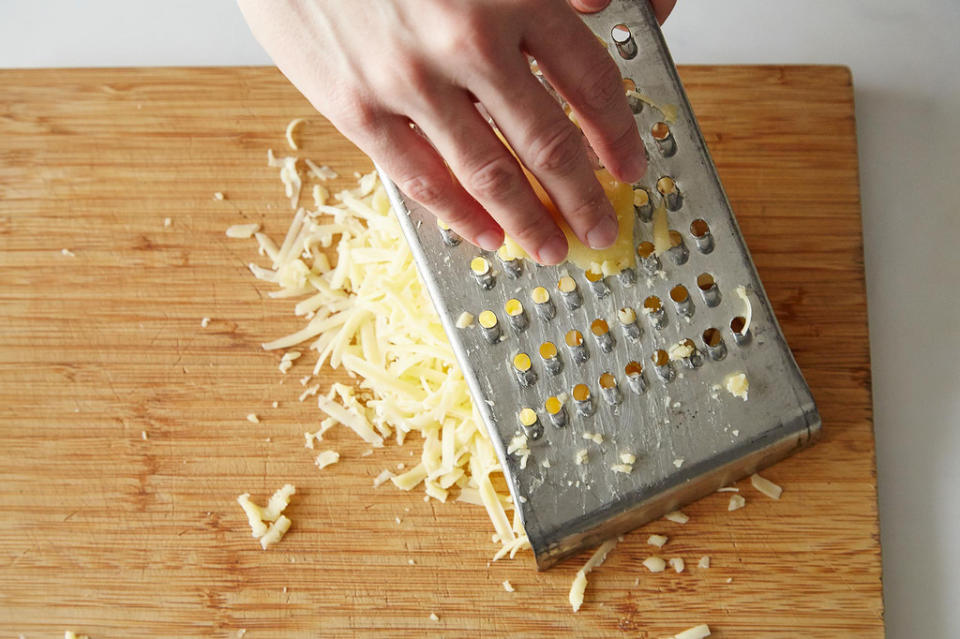
Grating cheddar cheese. (Photo: James Ransom)
1. The Plain Cheddar Test
I expected there to be no contest here. Everyone would prefer the expensive cheese that was aged for two years over an orange block of store brand cheese, right?
Related: The History of Macaroni and Cheese
Well, mostly right. Of the six testers, four clearly preferred the pricier cheddar, describing it as “sharper,” “bolder,” and “better textured.” One tester was split between the two choices, saying she would prefer the expensive cheese for eating as-is, but could anticipate wanting the cheaper version in her macaroni. Only one tester straight-up preferred the budget brand. When I told him after the experiment that he had chosen the cheaper brand, he shrugged and said, “I guess I’m pretty basic when it comes to cheese.” No shame in that, my friend.
Related: How to Store Cheese
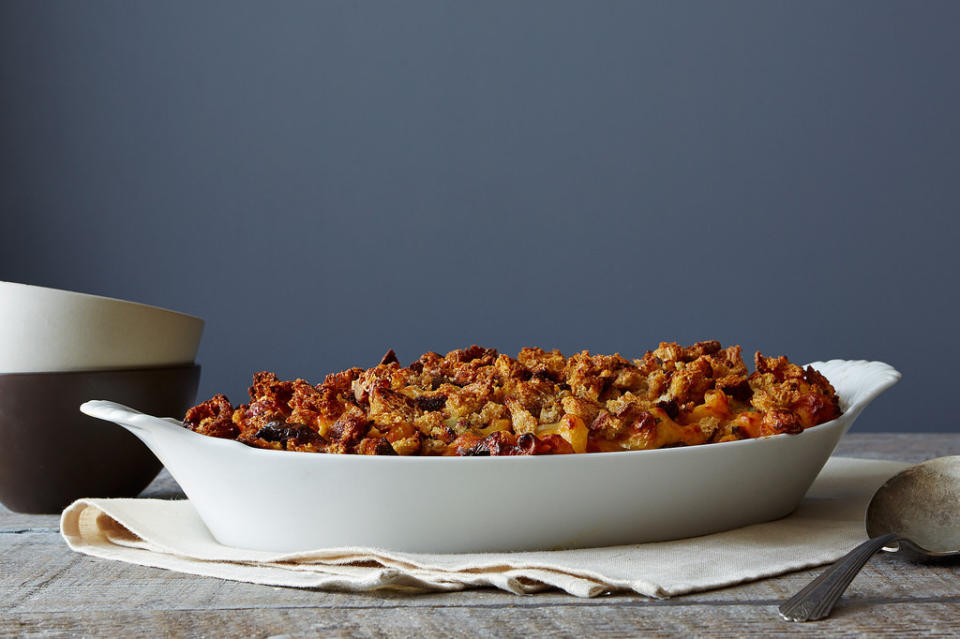
Macaroni and cheese. (Photo: Mark Weinberg)
2. The Mac & Cheese Test
In this test, opinion was even more split. Three testers preferred the macaroni made with the budget cheddar, while only two preferred the more expensive version. Though I was in the role of “scientist” and could not have an official opinion, I (unofficially) sided with the majority. The mac & cheese made with the cheaper cheese was more savory, while the one with the fancier cheddar was tangier, more subtle.
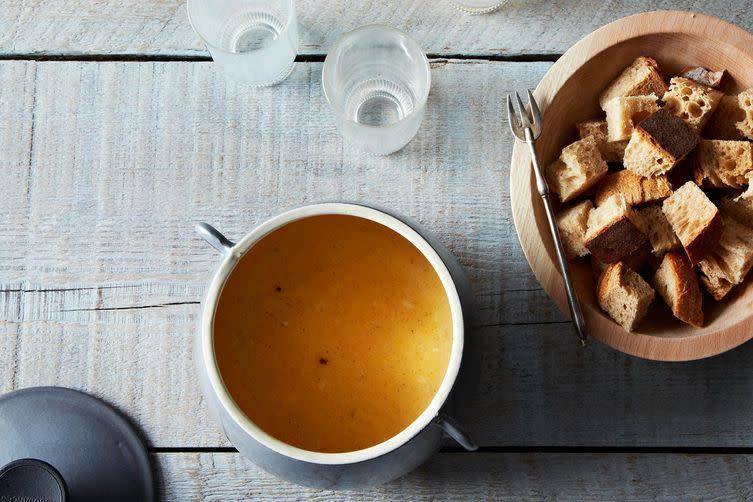
Aged cheddar and pilsner fondue. (Photo: James Ransom)
Analysis
When I compared the wrappers of both cheeses side-by-side, I realized there was only one difference (besides the vegetable dye added for color to one) between the two brands: The more expensive cheese was made from unpasteurized milk, while the budget brand was made from pasteurized milk. Are we to conclude that the pasteurization (or lack thereof) has a significant impact on cheese?
A quick refresher: Pasteurization is the process of heating milk to 145° F in order to kill harmful bacteria like E. coli or Listeria. While the heat kills bacteria that could make you sick, it also kills healthy bacteria—and all the naturally occurring organisms that give cheese that complex, funky flavor.
Serious Eats also raises the point that pasteurizing milk allows producers an opportunity to cut corners. Since the process will kill off any bacteria, they don’t have to hold milk to the highest of standards.
Since 1940, the U.S. has banned the sale of raw milk cheeses aged for fewer than 60 days, claiming that any potentially harmful bacteria in unpasteurized milk couldn’t survive over two months. This explains why most of the cheaper brands of cheese, which aren’t typically aged as long as two months, are made with pasteurized milk.
But why did the testers prefer one cheese as-is, and another in their macaroni? Perhaps some change happened in the melting process? Maybe I had chosen poorly when making my expensive cheese selection? Or, maybe, people just prefer their comfort food made basic.
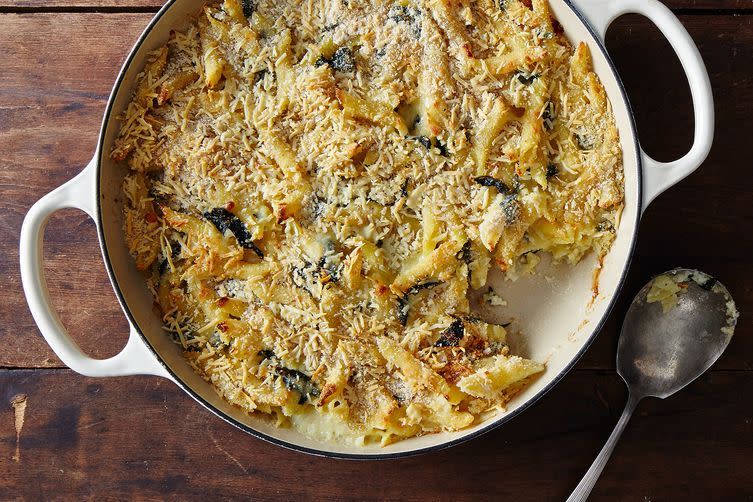
Kale macaroni and cheese. (Photo: Bobbi Lin)
Conclusion
If you’re buying a block of cheddar to eat on its own, it’s worth spending a little more…well, you know. If you’re buying cheddar to cook into a dish, such as a casserole or cornbread, however, the quality difference is less noticeable.
By Catherine Lamb.

